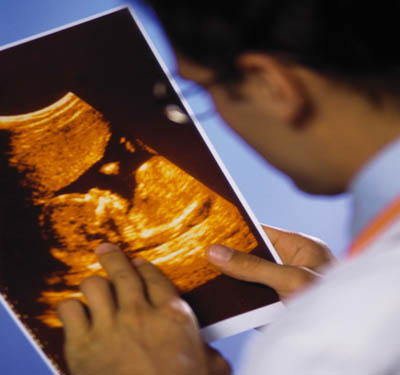Emergency ultrasound training needs review
Standards for emergency ultrasound training of medical residents may be in need of review.
Published online 3 January 2017

Ultrasound has become an important diagnostic tool in the emergency room.
Image Source / Alamy Stock Photo
In 1994, the first emergency ultrasound curriculum set by the Ultrasound Task Force of the Society for Academic Emergency Medicine established 50 scans as the number that would lead to competency in scanning the abdomen, pelvis and heart. The American College of Emergency Physicians later changed that to 25 scans in 2001. But despite the years that have passed since these guidelines were established, there is little evidence to validate this number-based model to assess competency.
Researchers in the US compared the competence and level of confidence in diagnosis of 36 emergency medicine residents at a trauma centre emergency department in Rochester, Michigan, with the number of previous scans performed. Their study shows that the number of scans needed to reach competency may vary depending on the type of scan performed1.
The researchers tested post-graduate residents through year one to year three by showing them 30-second video clips of emergency ultrasound examinations of the abdominal right upper quadrant, which is commonly used to evaluate abnormalities in the pancreas, liver and gall bladder, the abdominal aorta, the heart, first trimester pregnancies and of rapid scans aiming to look for blood around the heart or abdominal organs following trauma. The residents were then asked to write a diagnosis for each video and rate their level of confidence in that diagnosis.
They found that, as expected, the more scans previously performed by the residents and the more years of experience they had, the more accurate their diagnoses. Contrary to currently set guidelines, however, the study found that accuracy in diagnosing the ultrasounds in the videos improved after performing only 16 previous right upper quadrant abdominal scans and 13 previous abdominal aorta scans. The relationship between number of scans and accuracy of diagnosis was less clear for other types of ultrasonography. Residents’ level of confidence also increased with increased years of experience for all types of sonography except for scanning first trimester pregnancies. Also, as their level of confidence in their diagnoses increased, their accuracy was found to improve.
“These points along with the different thresholds for accuracy between right upper quadrant and abdominal aorta [scans] show that the number of scans needed to reach competency may be variable dependent on the specific ultrasound application,” write the researchers. “The recommendation of 25 scans per application across the board may not be appropriate,” they conclude in their study published in the Journal of Emergency Medicine, Trauma & Acute Care. Ultrasound scans of first trimester pregnancies, which may be more difficult to master, may require more than 25 scans before a resident is competent; whereas other types of scans may need a fewer number of times for residents to achieve that same level of competency, they say.
Reference
- Bahl, A. & Yunker, A. Assessment of the numbers-based model for evaluation of resident competency in emergency ultrasound core applications. J. Emergency Trauma Acute Care 2015, 5 (2015) | article
DOI: 10.1038/qsh.2017.142

